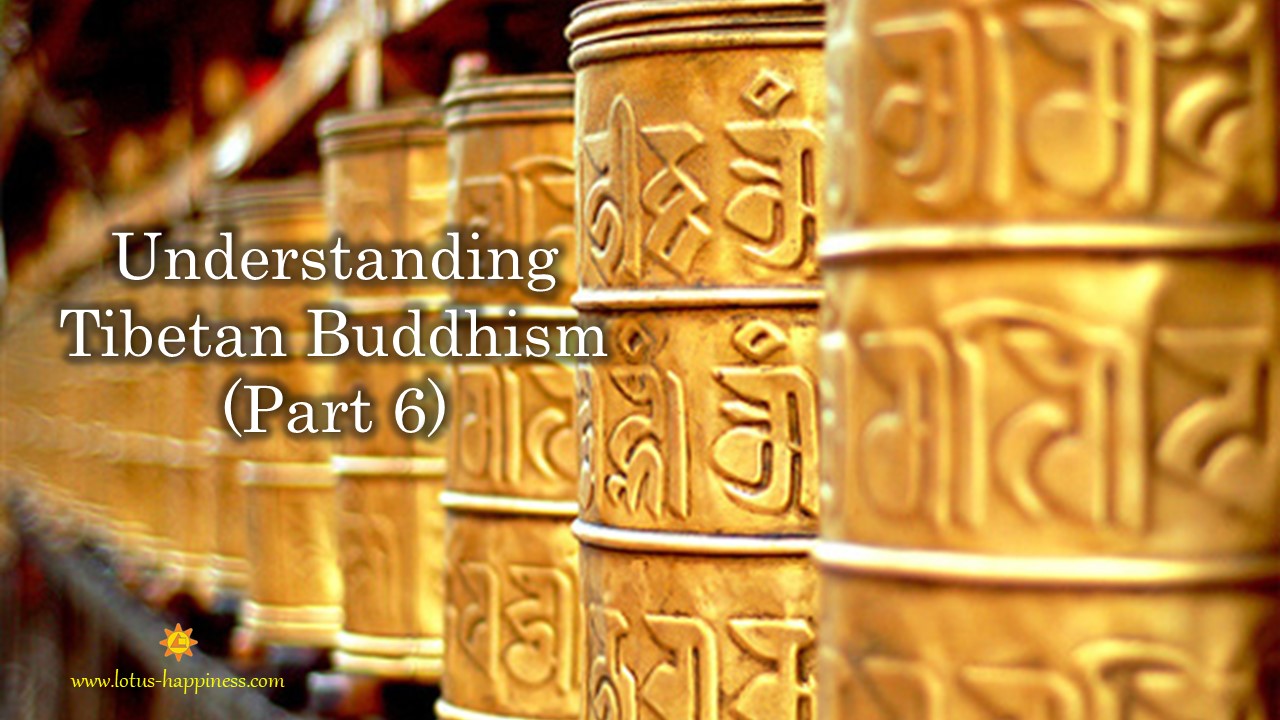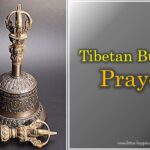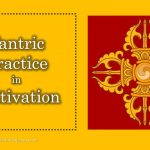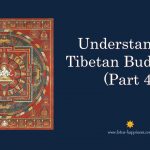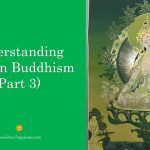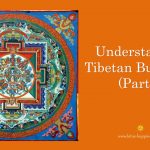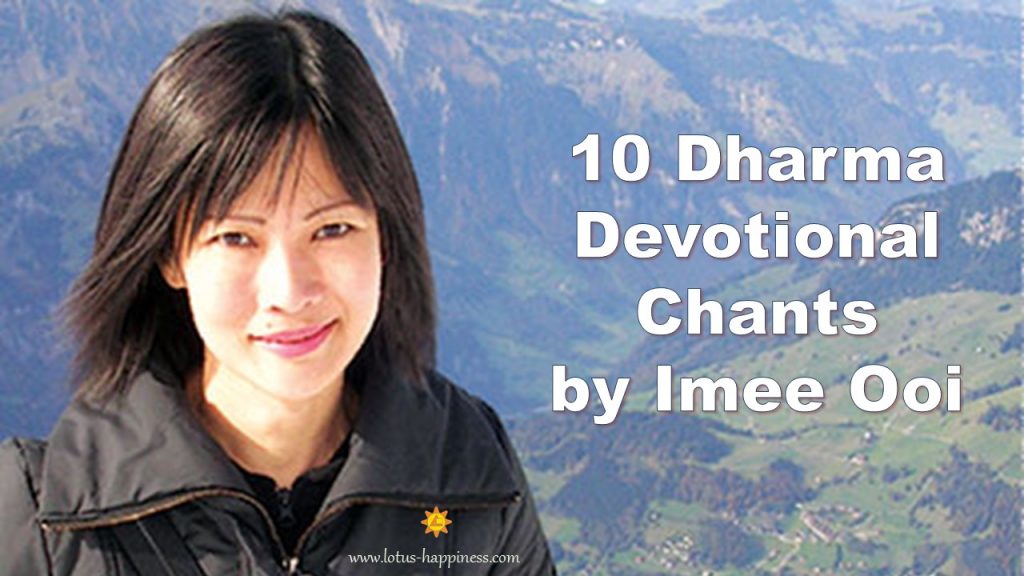Understanding Tibetan Buddhism (Part 6)
Tantric Initiation
After the preliminary practices, the formal Tantric practice begins with initiation. Initiation [灌頂] is known as Abhiseka in Sanskrit, which literally means ‘sprinkling’. It is a kind of enpowerment [加持力] by a master called Guru. The emphasis on the need of a guru is one of the essential characteristics of the Tantric meditation. It is obvious that Tantric meditation cannot be practised without a Guru, which is different from the Hinayana and Mahayana meditation. Thus, it does not just mean being taught the method of meditation by a guru, but is an initiation supervised by a guru.
The equivalent word of Abhiseka that the Tibetans use is ‘Wongkur’, which means transmission of power, rendering the inner meaning of Abhiseka. In other words, the Tantric initiation is essentially a transmission of spiritual power from the Guru to the disciple. This is symbolized by the sprinkling of water, and very often embodied in a Mantra, a sacred syllable or phrase to be repeated over and over again, which is given at the time of initiation.
It may be misinterpreted that Vajrayana emphasizes ‘other-power’ of the designated deity (called Yidam [本尊] in Tibet) through initiation, which is actually very limited. The practitioner is not really blessed and protected by the deity, but is required to subdue his own mind [制心] through meditation, thus to control his consciousness through contemplation or visualization [觀想]. If the Tantric practitioner does not practice contemplation, they will have no progress and responses in reciting and upholding Tantras. Though it is the basic requirement for any Tantric practitioner, it is not easy to breakthrough, because he can come across different physical and psychological reactions. Thus, the guidance of a qualified and experienced Guru master is absolutely necessary, otherwise he may get into ‘trouble’ and enter a deviant way in the pursuit of Buddhahood.
Tantric initiation and the Three ‘Kayas’
The Tantric initiation is correlated with body, speech and mind, the basic division of human beings in Buddhsim. In Vajrayana, the attainment of Enlightenment is interpreted as the acquisition of the Three Kayas [三身]. Kaya literally means body. The Three Kayas represent different facets of the Enlightened Mind, different aspects of Buddhahood as it appears on three levels.
- Nirmanakaya (Form Body) [色身] — Buddhahood as it appears on the human historical plane, i.e. Sakyamuni Buddha with his physical body, known as manifested personality, or body that can be seen with our human eyes.
- Sambhogakaya (Enjoyment Body) [受用身] — Buddhahood as it appears on higher archetypal plane, above and beyond the historical context, known as the body of reciprocal enjoyment, or the glorious personality, which can only be visualized by the Arhats or Bodhisattvas.
- Dharmakaya (Dharma Body) [法身] — Buddhahood in its ultimate essence, known as absolute personality, which can be visualized by the Buddhas.
The Three Kayas also represent the body, speech and the mind of the Buddha. The aim of Vajrayana is to transform our body, speech and mind into the threefold personality of a Buddha. Our physical body is transformed into the Nirmanakaya of a Buddha with the aid of the ‘Jar’ Wong and its associated meditations. Our speech is transformed into the Sambhogakaya with the aid of the ‘Secret’ Wong. Our mind is transformed into Dharmakaya with the aid of ‘Prajna’ Wong. The fourth Wong represents the transformation of body, speech and mind collectively into Svabhavikakaya, which means the ‘self-existent personality’. It is not really a body, but the totality of the other three.
Tantric Initiation and the Four Tantras
The four kinds of Tantric initiations are also correlated with the Four Sets of Tantras, or the Four Yogas (not the four Mula Yogas, which will be discussed later), but quite different Yogas sometimes known as the ‘Four Tantras’. The practitioner attempts to transform his own body, speech and mind into an enlightened state by using the visualized deity as a model, and to realize the nature of emptiness at the same time.
- Kriyayoga, the ritual Tantra, also known as Action Tantra [作密], which covers a whole class of practices, hundreds of different exercises. It is also known as Action Tantra. Primarily, it involves external rituals such as making offerings to the deities of Vajrayana, ritual bathing (taking refuge, like baptizing), symbolic hand gestures (hand seal, i.e. Mudras) and practices on pure conducts. Kriyayoga practices are usually described as consisting of one part meditation and three parts symbolic ritual. If a Tantric practice consists of, for example, a quarter of an hour’s meditation and three-quarters of an hour’s ritual, then it would be regarded as belonging to the Kriyayoga.
- Upayayoga, which means ‘both sides’ Tantra. It is also known as Charya Tantra or Performance Tantra [行密]. The practitioner engages in both internal and external practices and generates himself as a living embodiment of the deity. Upayayoga practices involve more meditation: half symbolic meditation and half ritual.
- Yoga Tantra [瑜伽密], which consists of three parts meditation and one part symbolic ritual. The practitioner is required to take the Tantric vows, not just the Bodhisattva vows. At this stage, internal practices are emphasized to develop meditative stabilization.
- Anuttara Yoga, the Unsurpassed Yoga or Highest Yoga Tantra [無上瑜伽密] which, according to the traditional schema, is devoted solely to meditation. In deep concentration, the practitioner generates higher insight on an image of the deity with the details of everyday reality and he transforms himself into the image. The Dharma Body is achieved through the wisdom (Prajna) that perceives emptiness, and the Enjoyment Body and Form Body through Deity Yoga. The supreme ones, providing many extraordinary subtle means of acquiring realization which are not found in the other Tantra sets, and emphasizing the techniques of the development [生起次第] and completion [圓滿次第] stages towards Buddhahood.
The first three Yogas are known as Outer Tantra or Exoteric Tantra [外密], and the Anuttara Yoga comprises the Inner Tantra or Esoteric Tantra [內密]. These four initiations are collectively known as the ‘Great Wong’ or the ‘Great Tantric Initiation’.
There are numerous systems of meditations (Sadhana) in each of the four sets of Tantras. Many of them lead to the acquisition of the so-called ‘mundane Siddhis’ (powers) such as long life, prosperity and pacification of harmful effect (Karmic force). However, it is said that only the Anuttara Tantra lead to the ultimate Sidhi, i.e. Mahamudra, known as the Great Seal [大手印] in this very lifetime. With this power of primordial wisdom, one can achieve enlightenment.
More about Anuttara Tantra
The two principal phases in Anuttara Tantras are: namely, the development stage or generation stage [生起次第] and the completion stage [圓滿次第], The former focuses upon luminosity while the latter upon emptiness.
Moreover, there are also numerous Anuttara Tantra deities. Among those who mostly worshipped are Hevajra, Chakrasamvara and the goddess Vajrayogini.
In general, there are four types of initiation in Anuttara Tantra:
- Vase initiation [瓶灌], Jar Wong, or Kalasa Ahbiseka — it enables a practitioner to practice the generation stage.
- Secret initiation [密灌], Esoteric Wong, or Guhya Ahbiseka — it allows the practitioner to practise developing the subtle body through energy [氣] and channel [脈], etc.
- Wisdom initiation [智灌], Prajna Wong or Jnana-Prajna Ahbiseka — it allows the practitioner to meditate on the innate mind of clear light [明點].
- Word initiation [名灌] — it enables meditating practices on the union of the bliss and emptiness. Usually a word known as ‘seed syllable’ [種子字] is given to the practitioner, which can purify his 8th, or Alaya consciousness in order to practise the Dzochen.

